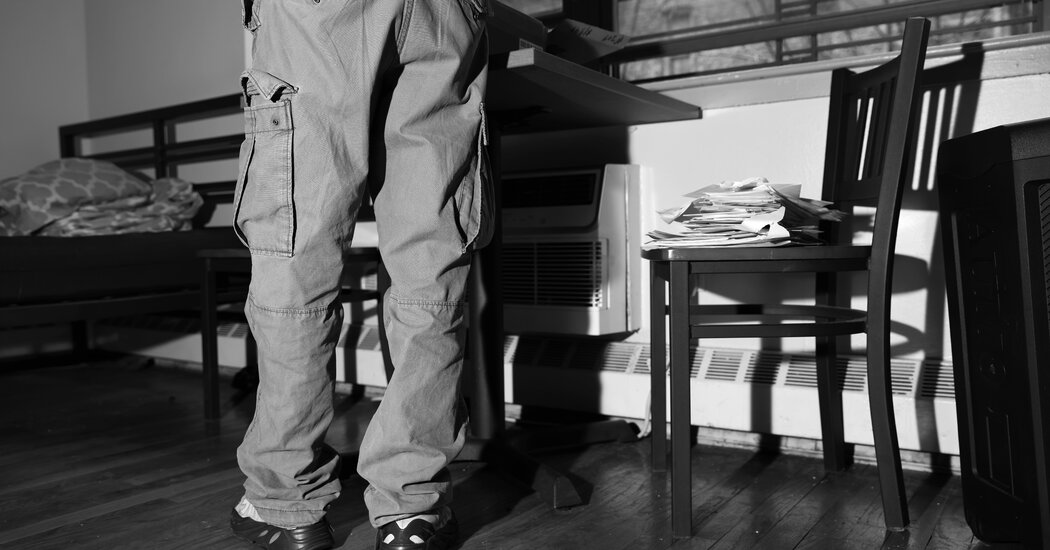For Americans struggling with chronic homelessness and mental illness, there is a common answer: apartments with very low rents in a building that offers social services on site.
Permanent supportive housing, as it is called, started in the late 1970s in New York City after two factors caused homelessness to spiral: the mass deinstitutionalization that emptied psychiatric hospitals without providing former patients with adequate support, and the elimination of cheap “single-room occupancy” apartments. About 400,000 Americans, including more than 40,000 in New York City, now live in supportive housing.
It is a cornerstone of Housing First, long the federal government’s favored anti-homelessness policy.
We spent more than a year talking to residents and workers at a supportive housing complex in the Bronx, called the Lenniger, which is home to about 60 formerly homeless people with mental illness, many of whom have had substance abuse problems, to learn what life is like inside these buildings.
Here are six takeaways.
Permanent supportive housing tries to meet a formerly homeless person’s needs under one roof.
People in buildings like the Lenniger have their own apartments and are assigned to a caseworker or a social worker who is based on site.
These workers offer counseling, financial coaching, help navigating bureaucracies and applying for benefits like disability income, and connections to medical providers and substance abuse programs. The subsidized rent that tenants pay is typically 30 percent of their income, which is often in the form of disability payments.
The Supportive Housing Network of New York says that permanent supportive housing “serves people who could not maintain housing stability without services and who could not access adequate services without stable housing.”
Permanent supportive housing keeps people housed.
Research has found that people who move into permanent supportive housing tend not to fall back into homelessness. At the Lenniger, over the last four years, more than 95 percent of tenants have either remained in their apartments or moved to other stable housing. About half the current tenants have lived at the Lenniger since it opened in 2011.
It works by making it as easy as possible for people to stay.
There is no sobriety requirement in supportive housing, no requirement that people with mental illness take medications, and no work requirement. Those kinds of rules have been shown to scare some people off and cause others to fail out of housing. At the Lenniger, residents are supposed to talk with their caseworkers twice a month, but there is no penalty for not doing so. Many residents fall behind on the rent, but the owner of the complex said it had not evicted anyone in years.
Its permissiveness has stirred political backlash.
Many conservatives argue that the Housing First approach — offering people low-cost housing without requiring them to accept services or to work — enables drug use and other social woes. Vice President-elect JD Vance is a noted critic. In 2023, while a senator, he said, “If we don’t treat the root cause of homelessness, we end up creating cycles of despair.” Some lawmakers want to shift federal funding to programs with treatment mandates, a more common approach before the spread of Housing First.
In New York City, demand far outstrips supply.
In the year ending last June, 9,600 people were found eligible to move into supportive housing. But only 2,400 found an apartment.
Part of the problem, according to the Supportive Housing Network of New York, is that different supportive housing buildings are intended for different populations — people with serious mental illness, people coming from jails, people over age 65, and so forth — and there may not be an apartment available in the type of housing a person is eligible for. There are also typically a couple of thousand vacant units at any time.
Permanent supportive housing is no panacea.
The supportive housing model leaves it up to residents to set goals for their lives and follow through on them, and at the Lenniger, many residents described feeling stuck there.
The Lenniger’s program director in 2024 estimated that 75 percent of the supportive housing residents had active substance abuse problems. One caseworker, Marcos Gonzalez, said of his clients, “You try to guide them and navigate them to making more beneficial decisions, but ultimately they’re the captain of their own ship.”
Some supportive housing residents who are parents told us that they did not feel it was healthy for their children to grow up surrounded by people who use drugs or have severe mental illness. One researcher, Tim Aubry of the University of Ottawa, compared buildings like the Lenniger to “a form of reinstitutionalization.”
The Headway initiative is funded through grants from the Ford Foundation, the William and Flora Hewlett Foundation and the Stavros Niarchos Foundation (SNF), with Rockefeller Philanthropy Advisors serving as a fiscal sponsor. The Woodcock Foundation is a funder of Headway’s public square. Funders have no control over the selection, focus of stories or the editing process and do not review stories before publication. The Times retains full editorial control of the Headway initiative.
